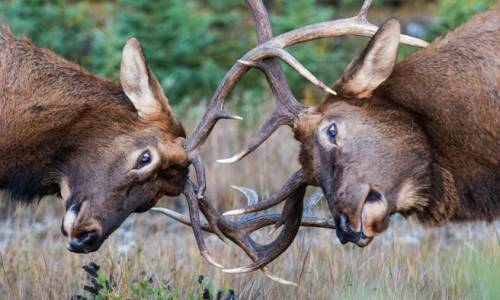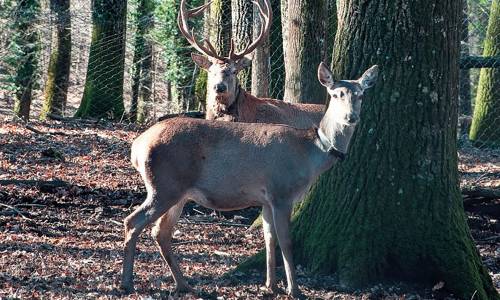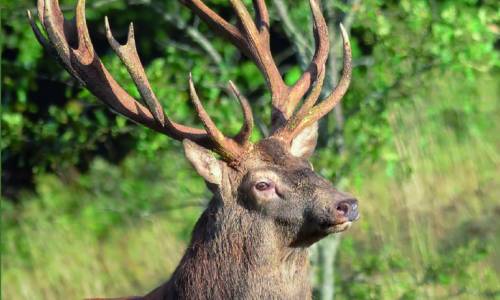
Deer
In the province of Pesaro and Urbino the deer have returned spontaneously by migrating from the Valtiberina and the Casentino forests. An ongoing miracle that must be facilitated and protected, for the biological and ecological value of this species.
The species needs to widen its distribution range, is in search of ecological corridors and has found this continuity in the wooded reliefs where there are vast state-owned areas, with oak forests and no hunting.
The deer is a social animal – in winter over 50 deer can be found together and in that context a respite is achieved from all the recent autumn clashes. In spring, pregnant females unhook themselves in groups of two or three and prepare for births, which arrive on time between mid-April and early June.
Fawns, which are generally only one, more rarely two, are born in a secluded place, if possible in tall grass, distanced from each other in the case of twins. For weeks the fawns remain motionless lying on the ground, with spotted back hair, silent and without smells because the few contacts with the mother, which are limited to breastfeeding, are always followed by a thorough cleaning and robust licks with which the mother deer takes away from her son the scent she might have given him. Camouflaged, dumb and odorless, the little ones are much more protected than next to the mother who has to think about moving with shrewdness, avoiding dangers and eating a lot. Mother deer and her offspring will live in symbiosis at least until after winter, then the young females will remain nearby and the young males will begin to move away looking for new territories.
The red deer (Cervus elaphus) of the cervidae family, order of the artiodactyls, measures up to 210 cm in length in males and 180 cm in females, height at the withers about 125 cm in males and 110 cm in females, weight up to 200 kg per males, 130kg for females. Males develop, already from the second year of life, a stage that enlarges up to the age of 8-9 when the animal reaches its maximum vigor. Each year, in the latter part of winter, the stage falls to the ground so that the new one begins to grow back. Antlers indicated the health of the animal: the firmer, larger and more symmetrical means males are in full health. This showy and bulky appendage is an ornament to appear more beautiful and more majestic with the bell and the mane of the neck, so as to condition the choice of females and to fend off the demanding males. Only when the visual and vocal confrontation are not enough can we reach the physical confrontation, noisy scorns that almost never arrive at the wounding of one of the duelists.



